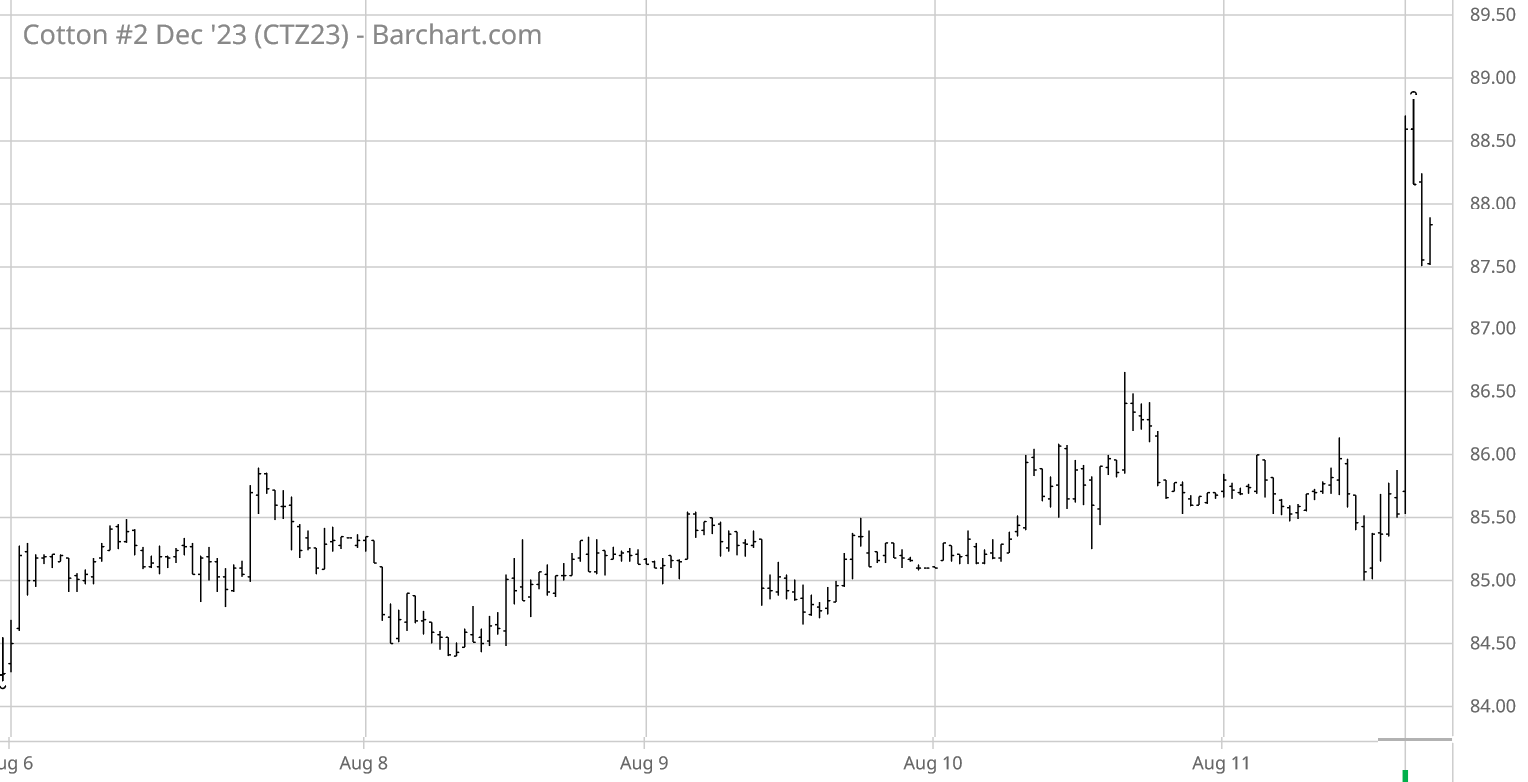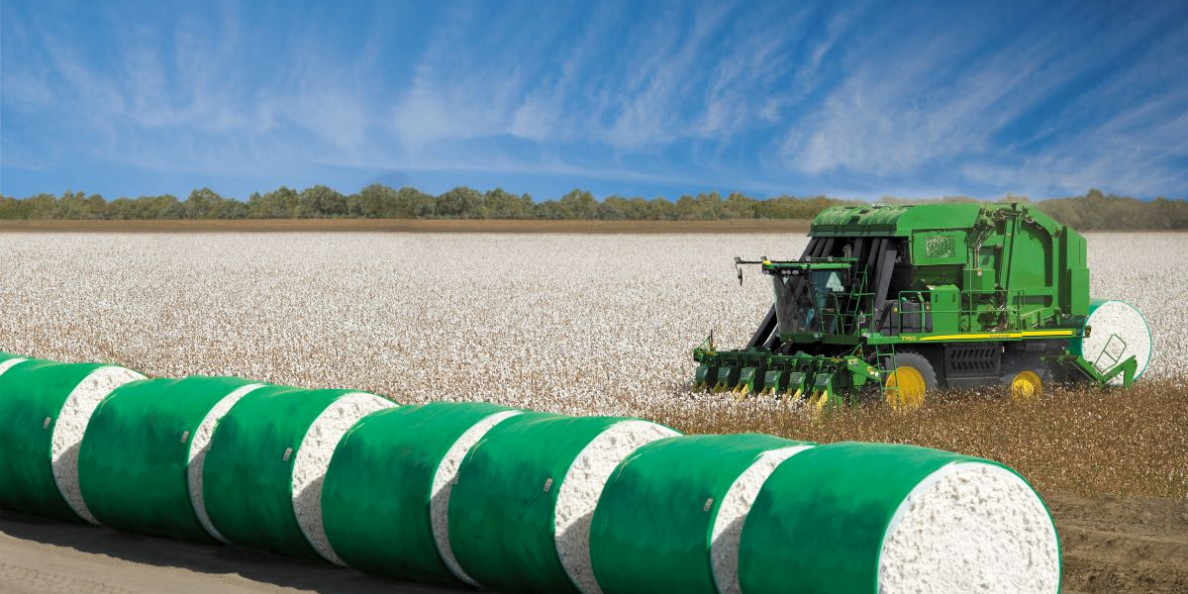For the week ending Friday, August 11, ICE cotton futures traded sideways into Friday’s WASDE report, then reacted sharply higher (see chart above courtesy of Barchart.com). After coming down off Friday’s highs, the Dec’23 settled the week at 87.89 cents per pound. Chinese cotton prices and the A-Index of world cotton prices were both more to mixed.
In other markets, CBOT corn and soybean futures, along with KC wheat futures, mostly followed sideways patterns before reacting with post-WASDE upward and downside volatility. The U.S. dollar index trended modestly higher across the week. Other macro influences (i.e., GDP, inflation, and interest rate policy) remain a potential headwind to longer term cotton demand.
Cotton-specific influences for the week included bullish supply/demand revisions by USDA. The eastern Cotton Belt was covered with what seems like regularly scheduled rainfall. Oklahoma received a lot of this rain, too, but Texas received only a small portion with hot and dry conditions dominating (click here and scroll down for the Texas regional summaries). Looking back, the excess moisture in April/May had mixed effects in northwestern Texas, followed as it was by wind and heat. The resulting production uncertainty is still clouding the U.S. cotton supply/demand and market outcomes.

On the other side of the world, the southwest monsoon rains were relatively early in their complete coverage of India, albeit a bit below average in their early accumulation. July saw an intense flooding rains in northern India and Pakistan. Now the monsoon rainfall appears to be in a lull, with hopes for a return to normal later in August. This raises concerns about the agricultural impact of the uneven distribution of monsoon rains. Pakistan has also suffered crop damage from excessive monsoon rains. Meanwhile in China, the main cotton producing region of Xinjiang had to deal with damaging temperature extremes. Meanwhile, our two major export competitors in the southern hemisphere have been harvesting strong cotton crops.
Through August 4, U.S. export sales started off the new marketing year strongly, while actual export shipments were below the needed weekly average pace (which is seasonally normal). Meanwhile, USDA’s weekly summary of the U.S. regional markets continued to reflect mixed spot physical trading activity and very light to moderate demand, across the U.S. regions.
ICE cotton futures open interest modestly rose and fell across the week. The regular weekly snapshot of speculative positioning (through Tuesday, August 8) showed minor building of 607 new hedge fund longs outweighed by 3,134 additional hedge fund shorts, week over week. The index fund net long position decreased by 1,500 contracts, week over week.
For more details and data on Old Crop and New Crop fundamentals, plus other near term influences, follow these links (or the drop-down menus above) to those sub-pages.
Source: TAMU

